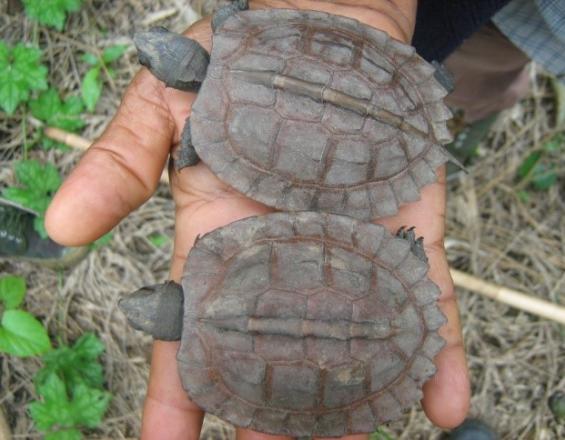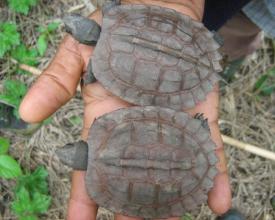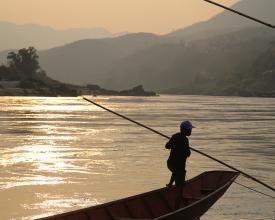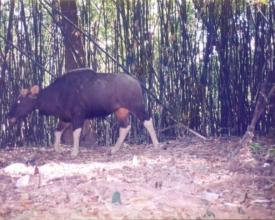Protected Areas, Development and Climate Change in the Lower Mekong River Region

The Lower Mekong River Region is a biodiversity hotspot. Forests, rivers, flood planes and wetlands support innumerable species, and are the foundations of rural livelihoods and local economies. Over the past 30 years, human development has forced many of these ecological systems to exist within landscapes and seascapes of anthropological pressures. Recognizing that communities and economies are better suited to adapt to climate change if natural systems remain intact, Laos, Cambodia, Thailand, and Viet Nam formed a region-wide partnership to adopt action plans for the strategic expansion of the region’s protected area (PA) network, and to formally integrate PAs into national, sector and regional development. The collaborative effort of governments, NGOs and corporations continues to study the nexus of conservation and development, examining the role of PAs in poverty reduction and climate change mitigation.
Context
Challenges addressed
Environmental – This solution addresses the challenges of managing natural resources that are not confined to country boundaries, and of forming a strategically planned and managed regional PA network.
Social – One of the main social challenges this solution addresses is alleviating poverty; particularly in poor communities bordering PAs. By strategically designing PA networks to protect ecosystem services, such as water filtration and food production, natural resources can be safeguarded and benefits can be incorporated into development planning to alleviate poverty.
Economic – This solution addresses the challenges of quantifying the economic value of PAs and their natural resources, and of collaboratively managing nature-based economies (such as fishing) across political borders.
Location
Process
Summary of the process
Quantify the economic value and contribution of PAs and natural resources to poverty alleviation and then add PAs and natural resources to the country budget and management plans and invest in their actual management
Building Blocks
Collaboratively plan and manage PAs and natural resources
Natural systems are not restricted to national boundaries and should be the foundation for regional development across borders, providing opportunities for political, technical and cultural collaboration leading to mutual economic gains. The partnership in the lower Mekong region united four member states, and expanded to embrace upper Mekong countries, and it provided the framework for focused conservation agreements between the countries.
Member states began by conducting national reviews of resources and policies, involving cross-sectoral working groups of PA agencies, economic planning and finance bodies, development sectors, and conservation organizations. National reviews directed a regional action plan to determine how much and which parts of the region should be kept in its natural state for the best development outcomes. Member states collaborated in reviewing issues requiring shared management, and adopted the same goals and objectives to facilitate comparative analysis and regional collaboration. The national reviews laid the foundation of information and directions the governments of the region wish to take, and the results will be integrated into the policies, programs and practice of each country and of their international partners.
Enabling factors
Collaborators should have common goals and objectives, and all members should benefit equally from agreements reached. Additionally, agreements should be formed in a way that allows them to be updated to account for the rapidly changing state of the environment and human development.
Lesson learned
Lessons learned to overcome different development priorities:
- The four countries do not have similar development progress, objectives and priorities. Thailand, for example, is more developed and conservation focused in comparison to Cambodia, where economic development is a priority. These differences have to be recognised to ensure that national development goals and priorities align with shared goals and objectives to collaboratively plan and manage PAs. This required intensive consultation, discussion and negotiation.
Lessons learned to overcome differences in PA management authority and capacity in developing collaborative plans:
- Lessons in resolving potential contradictions between developing (or difficulties in implementing) a national government level collaborative PA management plan and national processes of decentralization in PA management? Or perhaps differences in who decides and who is involved in PA management.
Value PAs and natural resources
To effectively conserve natural resources and facilitate sustainable development, a shift in perception must occur so communities and governments view PAs and natural resources as productive units of the economy, rather than resources under siege from development sectors and local communities. In the lower Mekong countries, attitudes are changing and governments are beginning to perceive PAs as economic assets carefully conserved for the development benefits they provide. While this shift is still occurring, governments are moving towards a situation where the natural capital held in PAs is subject to regular stock taking with the results reflected in GDP and budgets. Member states understand that investing in PAs and natural capital ensures resources are sustained, restored and expanded so they continue to produce ecosystem services vital to development and economic expansion.
Enabling factors
For this building block to be successful, citizens and industries must directly benefit from the conservation of natural resources and expansion of PA networks. Direct benefits may take the form of water filtration, flood control, fisheries production, etc. If citizens and industries do not directly benefit, they will fail to see the value in expanding PAs. Success also depends on the commitment of governments to financially invest in the upkeep and expansion of PAs and their resources.
Lesson learned
All PAs need to have their values expressed in economic terms which can be communicated in annual and long term budget submissions. Valuations should be part of PA management plans and environmental assessments associated with development proposals affecting PAs.
Each sector needs to be made aware of the development benefits they do or might receive from PAs.
Those benefits and their maintenance should be recognised in sector plans and budgets.
A more systematic application of the beneficiary or user pays approach in all sectors is needed requiring supporting economic policies and instruments. Pilots already carried out, for example, the Lao hydropower levies, should be applied consistently and replicated in neighbouring countries.
Users of PAs need to become involved in their management and protection. New collaborative management approaches will be required relating to specific areas, resources and rights of access and to the services and products PAs provide.
Underlying all these new directions, is the need to build the capacity, skills and budgets of PA managers.
Impacts
Environmental – The partnership has facilitated collaborative planning and management of the region’s PAs and natural resources. It has led to the establishment of shared goals and objectives, including the formation of a process to treat PAs and their natural capital as productive units in the economy subject to regular stock taking with the results reflected in GDP and budgets. The initiative also set the foundation to strategically expand the region’s PA network so critical ecosystems, such as flood planes, are included in PAs and not incorporated into human settlements.
Social – The partnership continues to prioritize poverty reduction in communities bordering PAs and landscapes that provide critical ecosystem services. Additionally, the continued expansion of the region’s PA network will serve a natural solution to mitigate the effects of climate change. Moreover, the collaborative effort has fostered positive working relationships between agencies and industries within each country, as well as across national borders.
Economic – Collaboration ensures that nature-based economies, such as fishing and tourism, are managed sustainably and consistently across political boundaries, ensuring resources and economies can flourish into the future. This is particularly important for resources that spread across country borders, such as rivers and migrating animal species.
Beneficiaries
The beneficiaries of this solution include the governments, citizens, and industries residing in the Mekong region.



